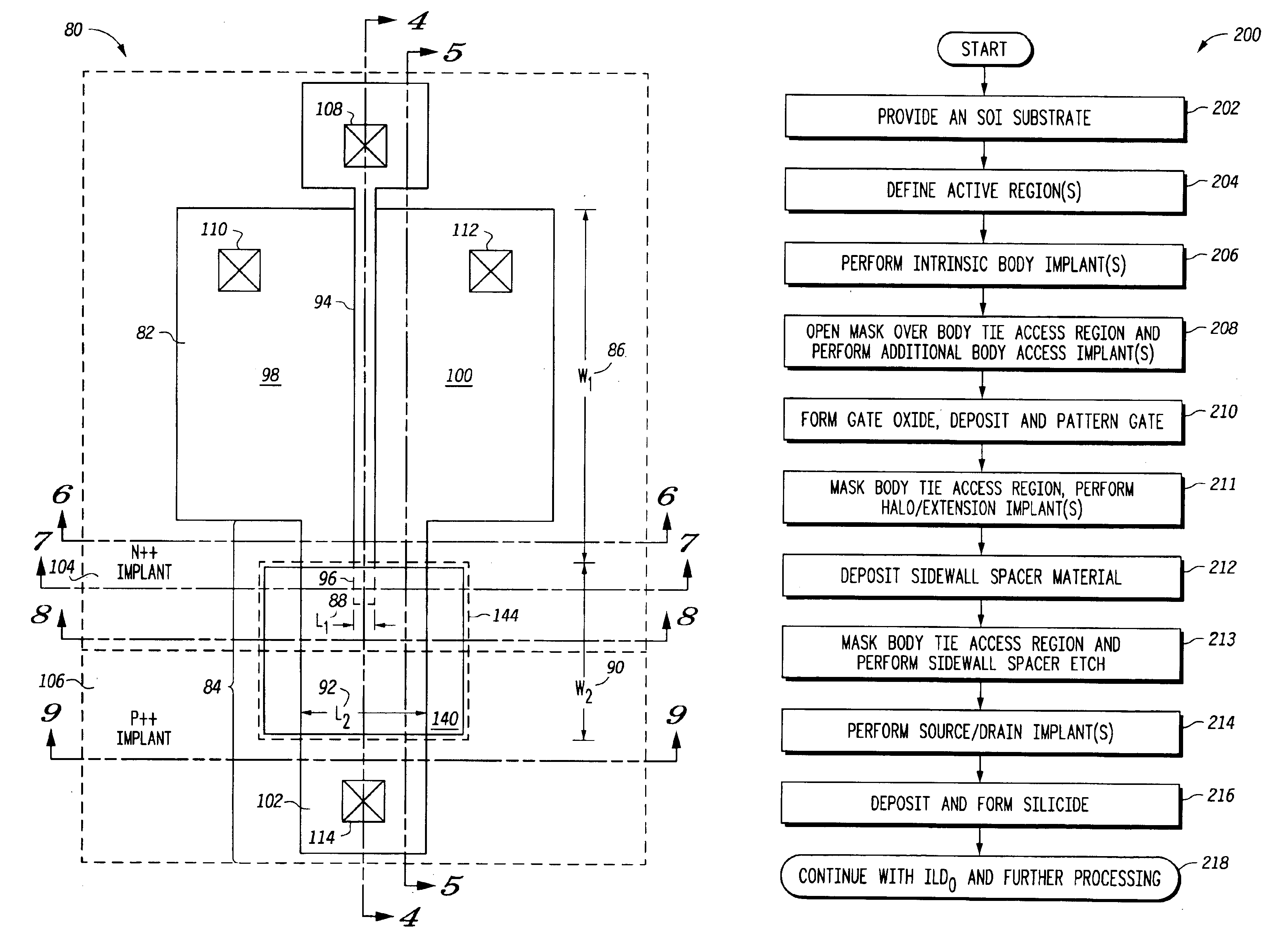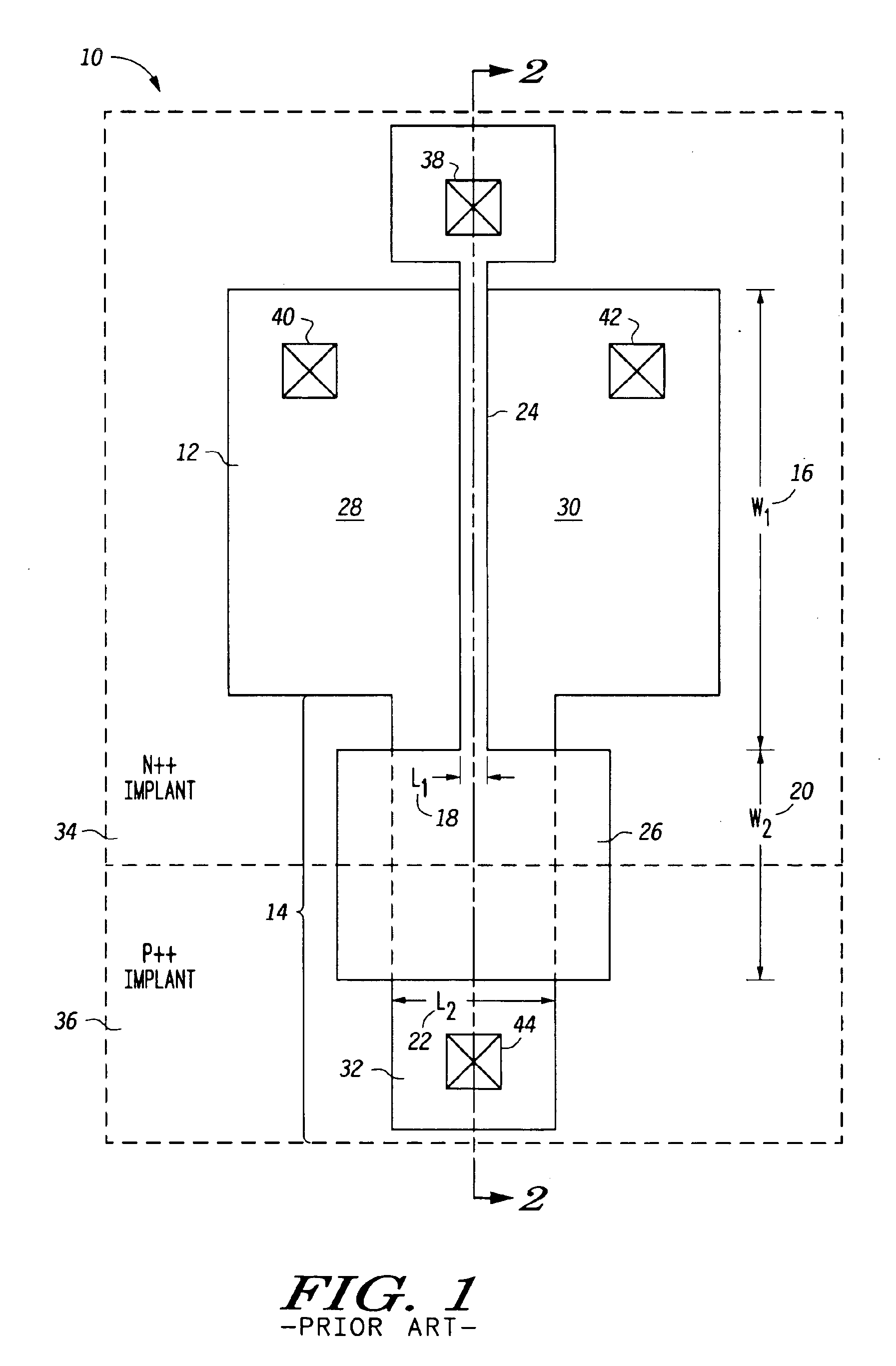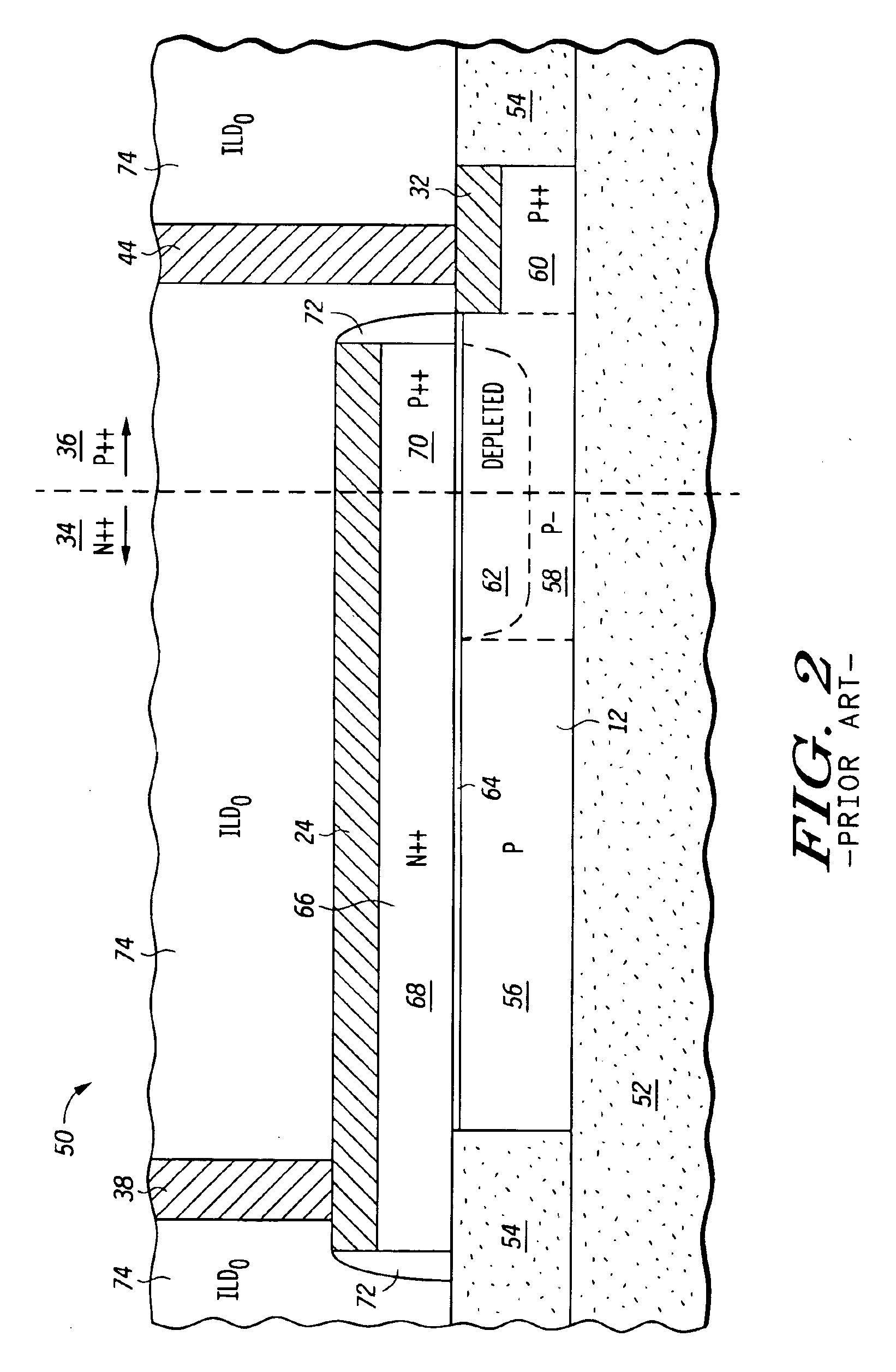Method and apparatus for forming an SOI body-contacted transistor
a body-contact transistor and body-contact technology, applied in the field of soi body-contact transistors, can solve the problems of reducing the physical size of the body-contact region or capacitance, reducing the physical size of the body-contact gate, and the use of the dual-gate oxide process does not provide any mechanism to reduce the physical size of the body-contact area, so as to achieve the effect of minimizing parasitic capacitance and gate electrode leakag
- Summary
- Abstract
- Description
- Claims
- Application Information
AI Technical Summary
Benefits of technology
Problems solved by technology
Method used
Image
Examples
Embodiment Construction
[0022]FIG. 3 is a layout view of a novel SOI body-contacted transistor 80 according to an embodiment of the present disclosure. SOI body-contacted transistor 80 includes an active transistor region 82, wherein active transistor region 82 includes a portion thereof for use as a body tie contact region, as indicated by reference numeral 84. An intrinsic body region, proximate a center of the active transistor region 82, includes a width dimension 86, designated as “W1,” and a length dimension 88, designated as “L1.” A portion of the active region, proximate a center of the body tie region 84, includes a width dimension 90, designated as “W2,” and a length dimension 92, designated as “L2.” This region corresponds to a body tie access region and is designated by reference numeral 128 in FIGS. 3 and 4.
[0023]SOI body-contacted transistor 80 further includes a gate polysilicon 94 overlying the active transistor region 82. The gate polysilicon 94 further includes a portion 96 thereof that o...
PUM
 Login to View More
Login to View More Abstract
Description
Claims
Application Information
 Login to View More
Login to View More - R&D
- Intellectual Property
- Life Sciences
- Materials
- Tech Scout
- Unparalleled Data Quality
- Higher Quality Content
- 60% Fewer Hallucinations
Browse by: Latest US Patents, China's latest patents, Technical Efficacy Thesaurus, Application Domain, Technology Topic, Popular Technical Reports.
© 2025 PatSnap. All rights reserved.Legal|Privacy policy|Modern Slavery Act Transparency Statement|Sitemap|About US| Contact US: help@patsnap.com



